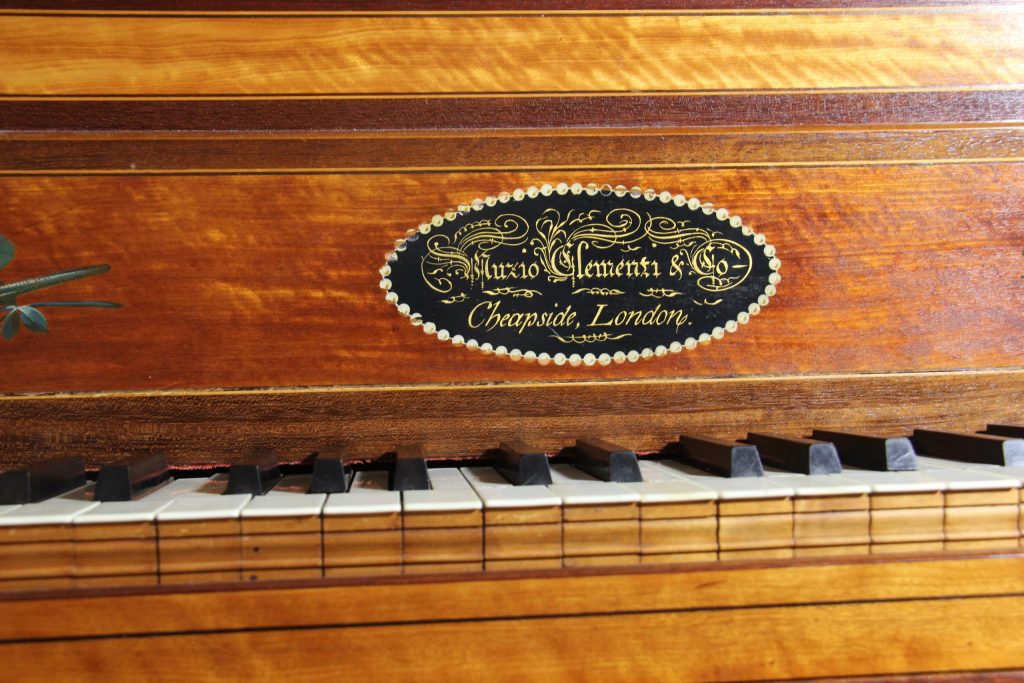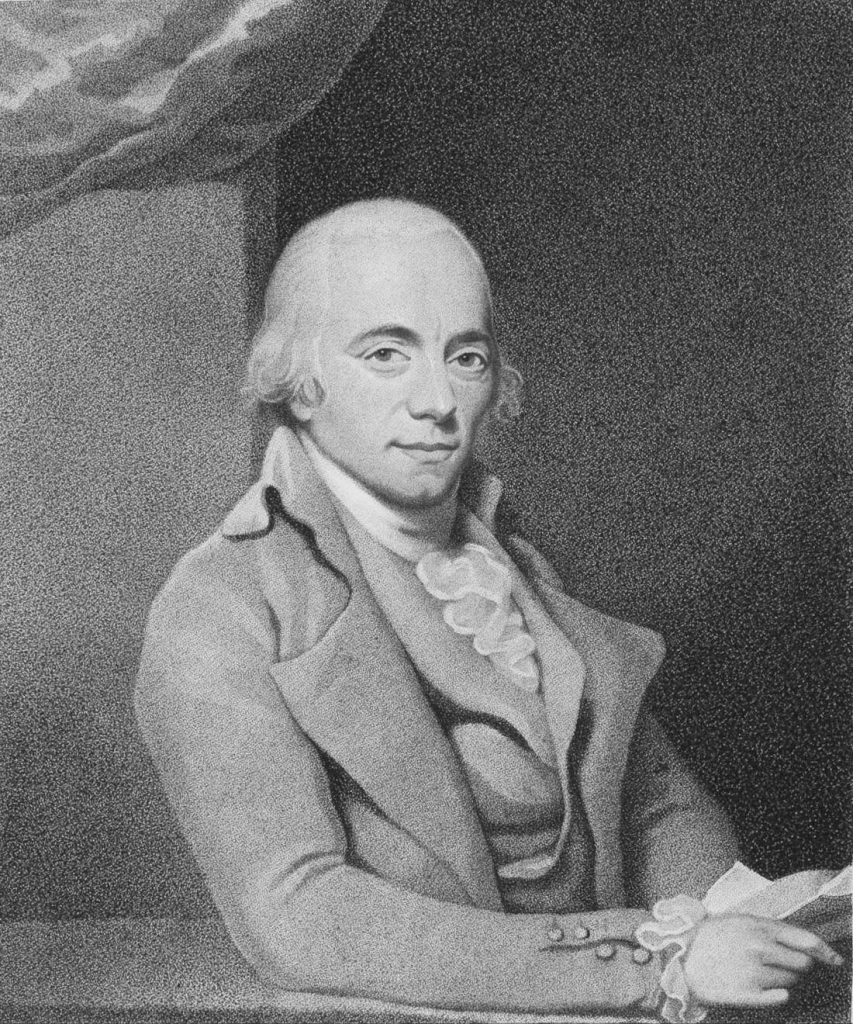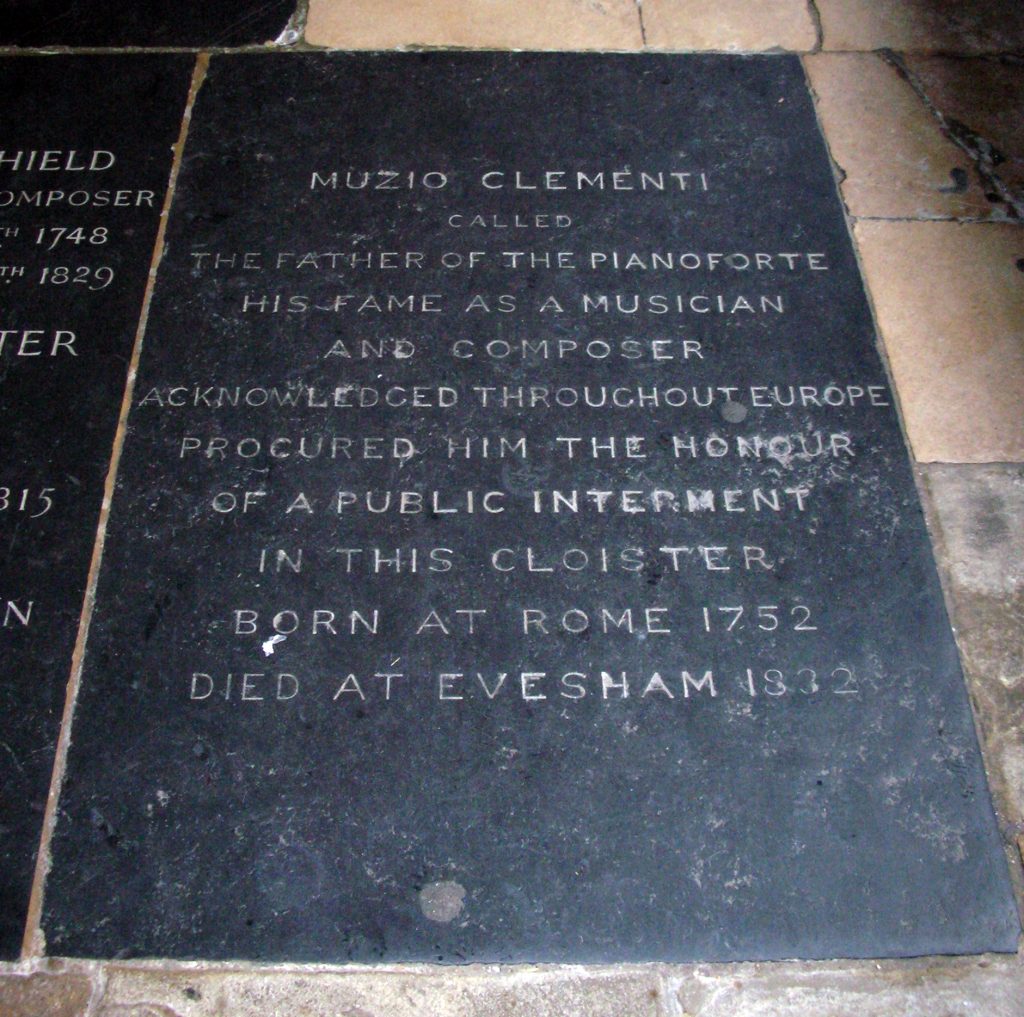
THIS WEEK IN PIANO HISTORY, we celebrate the birth of pianist, composer, and piano manufacturer Muzio Clementi, who was born on January 23, 1752. Although Clementi is most well known today for his sonatinas, he wrote a number of large-scale piano sonatas and achieved great success with his piano manufacturing business.
Clementi, born in Rome, lived the majority of his life in England where he established himself as a musician and businessman. In his teen years, he was introduced to Peter Beckford who “bought” Clementi’s service for seven years.1 Following this, Clementi gradually began to establish himself as an independent musician on the London stage. Although Clementi gave many concerts as a pianist and conductor, he significantly limited his concert appearances after 1790 and was significantly more involved in his piano building and music publishing company. His business successfully sold pianos throughout Europe and even employed his then students Johann Baptist Cramer and John Field to help market the pianos. He additionally gained the rights of several important composers such as Beethoven and was the first to publish them in England. Clementi’s company continued to be successful long after his retirement. Clementi died from an illness on March 10, 1832. He was later buried in Westminster Abbey in London.



In December 1781, Mozart and Clementi met in Vienna at the court of Joseph II where they battled in a notoriously famous piano duel. Clementi thought highly of Mozart’s playing, but Mozart was less than thrilled with Clementi’s performance stating: “Clementi plays well, as far as execution with the right hand goes. His greatest strength lies in his passages in 3rds. Apart from that, he has not a kreuzer’s worth of taste or feeling – in short he is a mere mechanicus.”2 Clementi’s fame did not initially suffer, but Mozart’s comments were shared by others in the musical world of the time and thus caused Clementi to later fade out of concert life.3
Clementi is especially well known for his many sonatinas and sonatas. Clementi’s Op. 36 publication of six sonatinas contains some of the most iconic music for intermediate-level pianists. Each of the sonatinas in the set progressively increase in difficulty, offering a variety of different challenges for developing pianists. His works, however, are not limited to the intermediate-level pianist. Many of his sonatas contain virtuosic elements such as the playing of legato thirds at rapid speeds as heard in the final movement of his Sonata in F-sharp Minor, Op. 25, No. 5.
His Sonata in G minor “Didone abbandonata,” Op. 50, No. 3, performed here on a copy of a Viennese fortepiano, contains amazingly expressive moments and is an effective concert work for advanced-level pianists. Besides keyboard music, Clementi wrote several symphonies, though they failed to compare to the works of that time by Haydn and Beethoven.4 His pedagogical work, Gradus ad Parnassum, contains one hundred different exercises published in three volumes, representing some of his finest work.
Are you or any of your students working on Clementi’s Sonatina Op. 36, No. 1? If so, check out this video by Amy Glennon that includes tips and tricks for tackling this standard of the piano repertoire.

Sources
- Alan Tyson, Leon Plantinga, and Luca Lévi Sala, “Clementi, Muzio.” Grove Music Online, 2001 (Accessed 16 Dec. 2022) oxfordmusiconline-com.uc.idm.oclc.org/grovemusic/view/10.1093/gmo/9781561592630.001.0001/omo-9781561592630-e-0000040033.
- Ibid.
- Ibid.
- Ibid.
Cranmer, Margaret, and Peter Ward Jones. “Clementi.” Grove Music Online. 2001; Accessed 16 Dec. 2022. oxfordmusiconline-com.uc.idm.oclc.org/grovemusic/view/10.1093/gmo/9781561592630.001.0001/omo-9781561592630-e-0000005937.
Tyson, Alan, Leon Plantinga, and Luca Lévi Sala. “Clementi, Muzio.” Grove Music Online. 2001; Accessed 16 Dec. 2022. oxfordmusiconline-com.uc.idm.oclc.org/grovemusic/view/10.1093/gmo/9781561592630.001.0001/omo-9781561592630-e-0000040033.